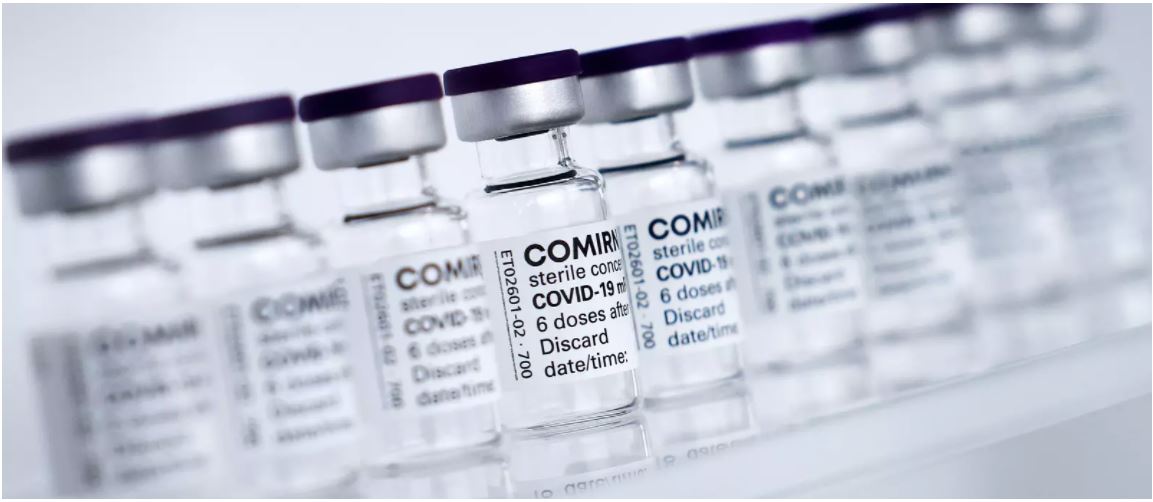CAN WE STOP THE COUNTERFEIT COVID VACCINES?

- Countries all over the world are reporting the sale of fake, or misleadingly labelled, vaccines.
- Counterfeit COVID vaccines are part of the rapidly increasing worldwide trade in fake medicines that poses a grave threat to health.
- Blockchain-backed traceability systems could be used to authenticate drugs – paired with secure labels.
In the past, forgers have targeted currency, artworks, even wine. Now, COVID-19 vaccines are in their sights. In July, CNN reported thousands of people had fallen prey to a scam selling fake coronavirus vaccines in India, with doctors and medical workers among those arrested for their involvement. At least 12 fake vaccination drives were held in or near the financial hub of Mumbai. Around 2,500 people who thought they were being administered a legitimate AstraZeneca dose were in effect receiving saline – and paid for the privilege. Another fake vaccination camp had been exposed a few days earlier in June by the Times of India, this time involving the Russian Gamaleya vaccine.
The World Health Organization’s Director-General, Dr. Tedros Adhanom Ghebreyesus, had already issued a warning in March about counterfeit COVID vaccines being sold on the dark web. This turn of events serves to remind the world about the dramatic impact of drug counterfeiting, a booming organized crime industry growing at the staggering pace of 20% annually. Back in 2017, PwC (conservatively) estimated the market to be worth $200 billion. When more than 10% of drugs sold worldwide are allegedly fake, in some low-income countries more than 50% of drugs administered to patients are counterfeit, causing more than 1 million deaths annually according to Interpol – higher than ones caused by suicide or illicit drug abuse.
Other countries are also seeing similar pandemic-exploiting crime. In April, Pfizer reported identifying counterfeit versions of its coronavirus vaccine in Mexico and Poland. The Mexican health regulatory agency, COFEPRIS, has issued six health alerts since January 2021, against the illegal sale of a long list of counterfeit AstraZeneca, Cansino, Moderna, Sinovac, Sinopharm and Pfizer COVID-19 vaccines. (Sinopharm and Moderna shots aren’t even officially available there).
No country is immune; even ones with broad vaccine availability like the USA and Israel, where some unscrupulous doctors and pharmacists have been caught selling empty vaccine vials on Craigslist or eBay. Do we seriously believe those vials are intended for a museum, especially when some buyers acquire dozens at a time? Search yourself, like I did, and you will easily find them.

This was all sadly predictable. When a market with the potential to reach $150 billion in pharma revenues for the 2021-2022 period emerges in record time, this will loom large on the criminal radar. It threatens us with the depressing prospect of a scenario where in some countries, despite the remarkable efforts of GAVI, CEPI and UNICEF in support of the equitable vaccine initiative COVAX, the illicit trade of COVID-19 vaccines results in counterfeiting levels comparable to other medicines. It would be nearly impossible for the world to reach herd immunity if 10%, 20% or more of vaccines were fake.
UNICEF well understands what a catastrophe this would be; why they are currently running a tender for the development of a blockchain-based solution, the Global Trust Repository (the GTR). To quote the tender document: “Falsification and illegal diversion of legitimate COVID vaccines pose a real and present threat. Fake vaccines impact public health, the economy, and could undermine confidence and impact COVID vaccine demand and hesitancy.”

The creation of the GTR is certainly good news as the vast majority of the 92 low- and middle-income countries served by COVAX have no national traceability systems in place to allow the tracking or verification of COVID-19 vaccines. In the absence of such systems, a verification solution is being proposed to all 92. It will allow COVID-19 packs in the legitimate supply chain to be scanned and verified, meaning their unique serialized product code number will be compared with a blockchain-secured repository of product codes originally generated by the manufacturers (the GTR).
This should ensure that many fake products will be identified and removed from the supply chain. Unfortunately, we are talking only a portion of them, as criminals’ appetite for big profit will not be fully deterred by this first step. Remember that according to Global Financial Integrity, medicines counterfeiting is the single most lucrative market of all transnational crimes; between 10 and 25 times more profitable than narcotics trafficking, according to the International Institute for Anti-Counterfeit Drug Research.
To counteract tampering with labels, drug manufacturers may eventually embed security features like invisible labels in primary packaging. This second step effort is no different in principle from watermarking with which banks secure their bank notes, or how governments mark cigarette packets to fully capture excise taxes. Reinforcing the connection between the physical product and its digital twin is what will finally defeat vaccines counterfeiting criminals. Promoting the second step is where the pharma industry can step up to better support UNICEF’s timely initiative.




